Naria erosa (Linnaeus, 1758)
Eroded
cowry, 15-49mm
Naria erosa is a common
species usually found on intertidal reefs or on shallow subtidal lagoon
or pinnacle reefs at depths ranging from 0 to about 10m. They hide under rocks
and generally have the mantle drawn into the shell during the day. At night,
the extremely papillose mantle is extended, camouflaging the shell effectively.
Shells on subtidal reefs tend to be larger than the ones living intertidally.
A number of tiny specimens were observed in shallow seagrass beds on the lagoon
side of Ujelang Island at Ujelang Atoll, the most western portion of the Marshalls.
This is the only substantial seagrass patch I have seen in the Marshall Islands
(although small patches of the seagrass Halophila minor are present
in some parts of Kwajalein Atoll and seagrasses are present at Majuro), and
it hosted small specimens of a number of common cowries. A crop of very small
shells was also observed over span of about a year on one Kwajalein lagoon reef.
Although they were not collected, they slowly disappeared and have not been
seen there in that small size for some years. Normal-sized ones are still present
on that reef. Naria erosa is widely distributed in the Indo-Pacific.
The Marshall Islands subspecies is Naria erosa chlorizans.
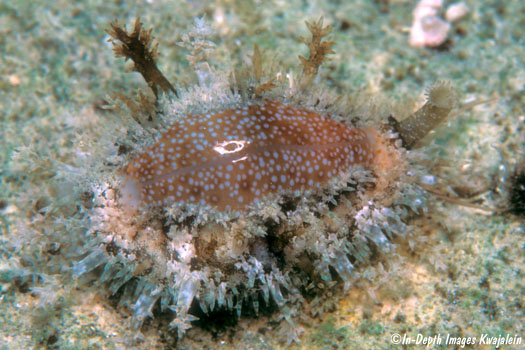
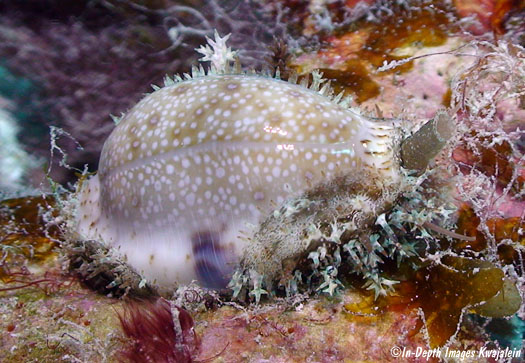
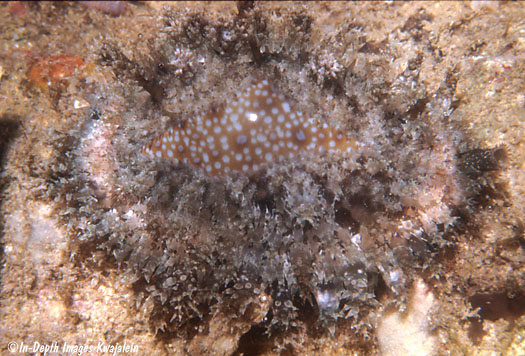
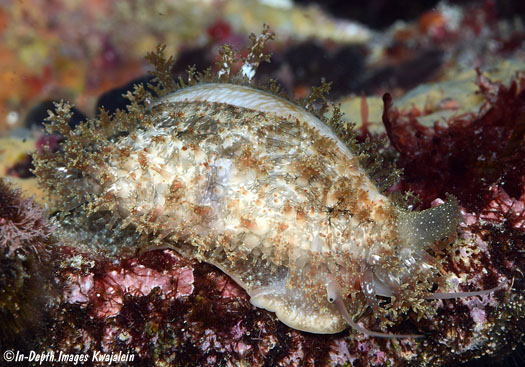
With the mantle completely covering the shell, it is hard to tell what you're
looking at.
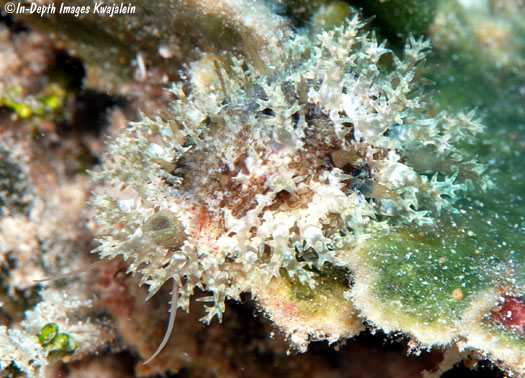
A pair crawl across an algae-covered rock.
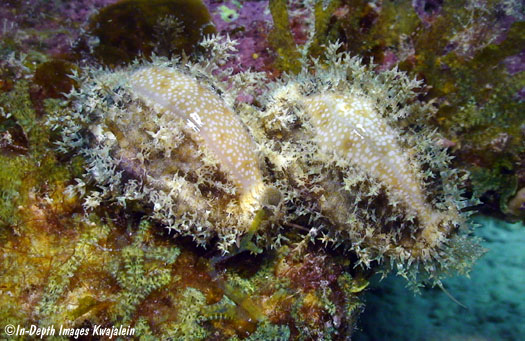
The next three photos show shells
with their egg masses. Eggs are deposited on the undersurfaces of rocks in clusters
of capsules, each containing a number of eggs. The cowry usually "broods"
them by staying over them with its foot covering the egg mass. In these photos,
the foot has retracted into the shell. Rather than incubating the eggs, however,
the parent is trying to keep them from being eaten. Unprotected eggs will quickly
fall prey to any number of egg-eating predators. Note the color difference in
the egg masses. The one immediately below is a younger egg mass, very recently
laid down on the rock. The lower brownish egg mass is probably several days
older, and we suspect the purple egg mass in the third photo may contain developing
larvae that are ready to break free. As the larvae develop within the capsules,
they start acquiring some color, even if just in the form of opaque internal
organs or black developing eyes. As this happens, the egg mass gradually darkens.
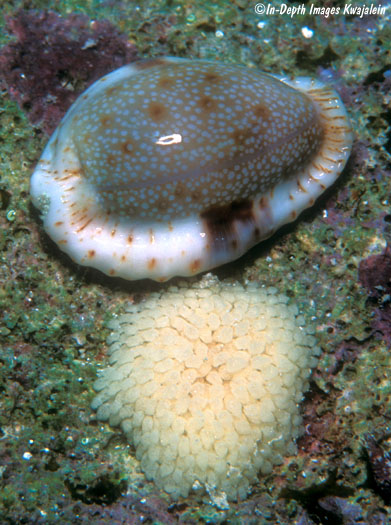
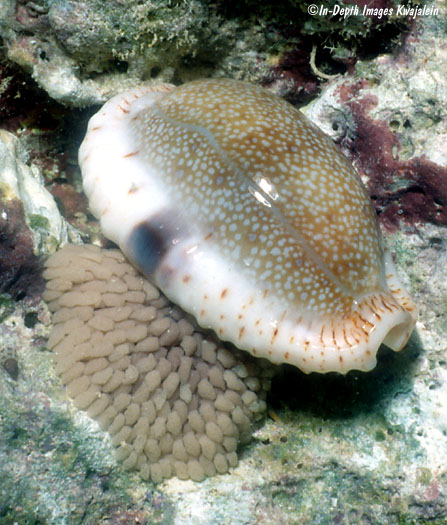
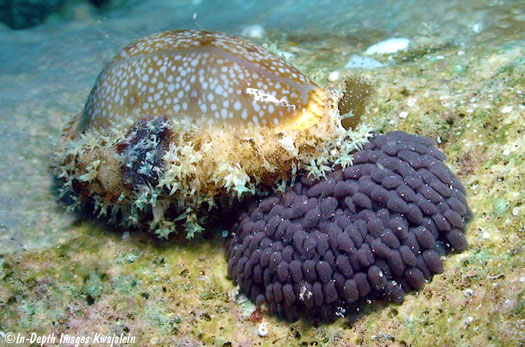
Here is the base of the shell with
the animal retracted inside.
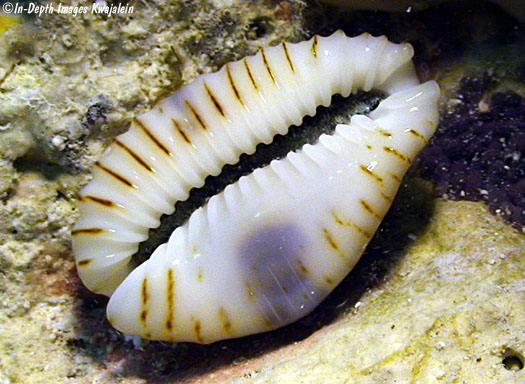
Specimens are occasionally found
tucked away in Halimeda algae.
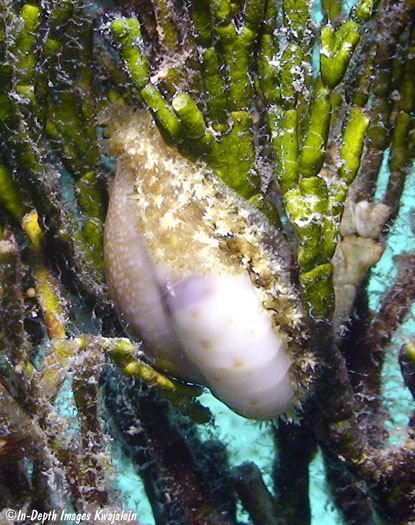
39.65mm, 12 June 1994
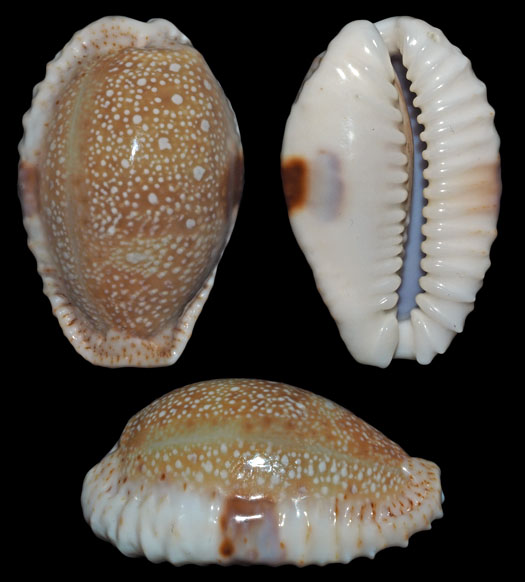
A
very small, 17.2mm specimen figured below may be slightly juvenile. 5 July 2013
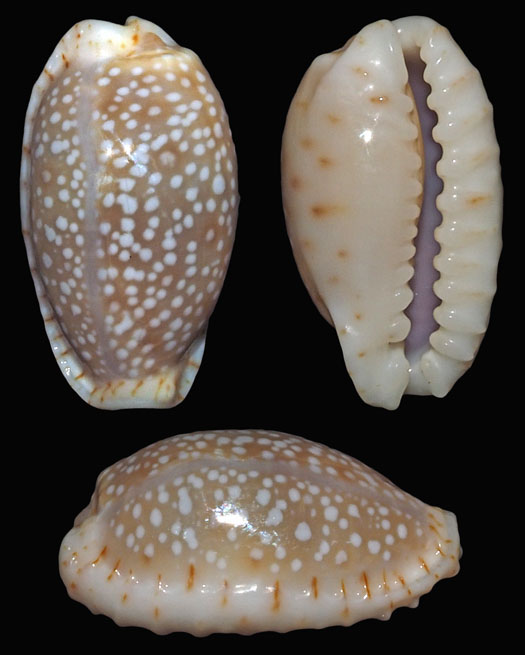
Another small specimen at 20.2mm
has more typical adult coloration with the lateral and basal dark blotches.
25 January 2009
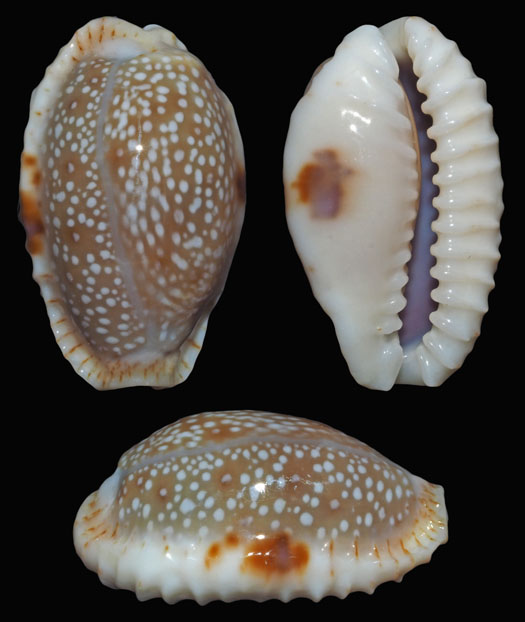
Created
1 April 2008
Updated 25 February 2020
Back to
cowries
Kwajalein Underwater Home














